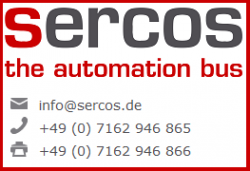POWER-OVER-ETHERNET (POE)
REMOTE POWER VIA STRUCTURED CABLING
Power-over-Ethernet – PoE for short – describes a system which utilises copper data cable to also supply electrical power (up to 100Watts). PoE devices & sensors are already used for many applications such as lighting, security systems and process control.
However, if the structured cabling system is to be used in this way there are a few points to bear in mind when planning, installing and operating it.
At iDaC Solutions, we partner with technology leader Datwyler, a Swiss-based cable manufacturer, who have developed a white paper on the subject.
WHITE PAPER
Development of the PoE standard up to the transmission of 100 watts of power was carried out in three standardisation phases:
PoE: Power supply over 10Base-T / 100Base-TX
The first standard for the supply of power over data cable – IEEE 802.3af – was ratified in 2003. While the conductor pairs 1/2 and 3/6 are used for data transmission, the two free pairs are available for the supply of power to end devices such as webcams, IP telephones or WLAN access points. Alternatively, however, provision is also made for the conductors engaged in data transmission to be used in parallel for the power supply. With a defined power output of 15.4 watts per port at the active components (switch port), end devices with a lower power consumption can be operated safely.
PoE Plus: PoE and Power supply for 1000Base-T
The remote supply of power to end devices was further developed by 2009. With PoE+ Standard IEEE 802.3at the maximum power at the transmitter end was increased to 30 watts on the one hand, releasing power transmission for faster Ethernet protocols such as 1000Base-T on the other. This made it possible to run other applications with a higher power requirement.
In the case of 1000Base-T, data transmission takes place in parallel over all four pairs. Power transmission is affected over two pairs and overlays data transmission. The available power at the consumer end is a maximum of 25.5 watts. This still severely restricts the choice of consumer.
4PPoE: Power transmission up to 100 watts
With standard IEEE 802.3bt, published in the 1st quarter of 2018, all the conductors in the data cable are used for power transmission for the first time. With “Four-Pair Power over Ethernet“ (4PPoE) the power at the transmitter end increases to 60 and 100 watts (IEEE 802.3bt Type 3 / Type 4 respectively).
This means that the supply of power to high-performance devices in the workplace now becomes a reality. At the same time the standard makes RJ45 the globally standardised connection technology for supplying electrical power to end devices over data cabling. Standard 4PPoE is backward compatible with PoE and PoE+. It is also compatible with 10, 100 and 1000BASE-T as well as with 2.5, 5 and 10GBASE-T. The minimum supported cabling standard is Class D (Category 5e components), with the budget for loop resistance being 25 ohms. The maximum input voltage for PoE is 57 volts.

Keeping the heating of cables under control
Data cables in structured premises cabling are primarily optimised to transmit digital signals as efficiently as possible. Their design is not optimal for the transmission of electric power.
A few things must therefore be considered when they are used for PoE. For example, the conductor cross-sections of data cables are small compared to those of low-voltage power cables. At a maximum of 57V, PoE voltage also tends to be low for power transmission. Consequently the current in the conductor is relatively high, and hence the power loss (P) along the cable increases. Power loss can be calculated as follows:
P = I2 x R
I stands for the current in the conductor, R is the DC (total) resistance of the conductor.
This indicates that power loss increases
- a) the higher the current is
- b) the longer the transmission link is
- c) the greater the conductor resistance is
This power loss takes the form of heat loss. This means that when PoE is used the communication cabling system turns into a heating system!
One should also be aware that as a general rule electrical insulators are also good thermal insulators. This has a negative effect on heat dissipation.
Problems hardly ever occur in practice, as long as only part of the cables in a data network are used for power transmission, and then only for PoE or PoE+. Heat dissipation in such an installation is good enough to cause no significant heating of the cables.
When 4PPoE (up to 100 watts) is used, however, cable heating becomes a phenomenon to be taken seriously. Experiments have shown that, when the installation rules are ignored and in the worst-case scenario, cable conductor temperature can rise to a level where the thermoplastic insulation materials melt. This can ultimately cause a short circuit.
For years experts have been addressing the issue of how the installation of high-performance communication networks incorporating PoE can be designed to be safe on the one hand, but straightforward, simple and economical on the other. Currently the second edition of ISO/IEC TS 29125 (2017) is dealing, among other things, with the safe installation practice of data networks in which large-scale PoE applications are to be employed.
ISO/IEC findings and recommendations
The ISO/IEC have measured the heating of a cable in a cable bundle “in the air” and “in the duct”.
To do this a thermocouple was introduced into each cable and this was placed in the centre of the bundle.
In Table 2 (source: ISO/IEC) the conductor temperature of the cable in the centre of the cable bundle is shown as a function of the conductor cross-section (= cable category), the number of cables in the bundle and the installation environment. Here all the pairs in all the cables of the bundle carry a current of 500mA per conductor.

In order to simplify installation practice as much as possible, the standard recommends a maximum of 37 cables per bundle throughout. If the cable properties, the installation environment and the effective PoE landscape are included in the planning process, however, other bundle sizes are also acceptable.
Conclusion and product recommendation
In terms of PoE the following key statements may be made:
- S/FTP cables have better heat dissipation than UTP cables
- AWG22 is more suitable for PoE than AWG24
- Small cable bundles conduct heat better than large ones
- Insulated and enclosed installation spaces (e.g. ducts) hinder heat dissipation
- Only modules certified to IEC 60512-99-001 guarantee the fail-safe operation of PoE applications.
To find out more about Datwyler’s solutions for PoE, please contact iDaC Solutions – their exclusive distributor in the UK& Ireland.

































